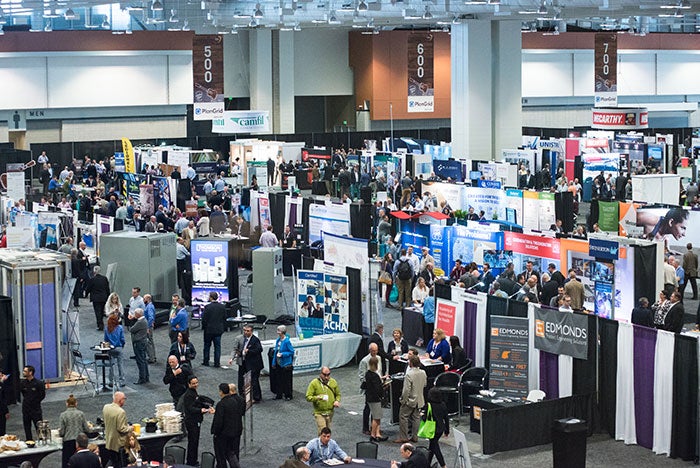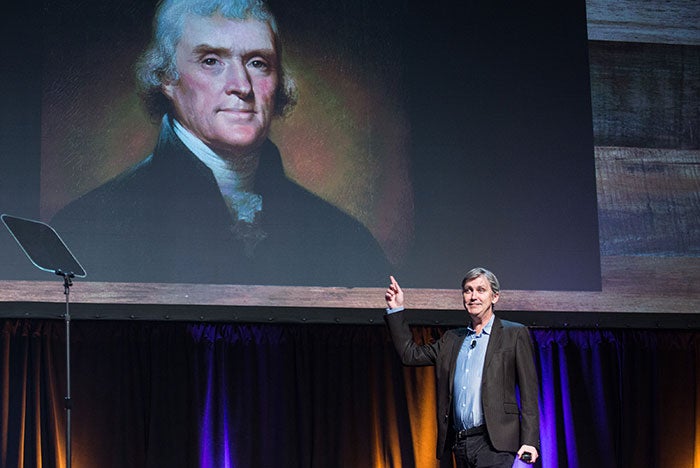Summit brings harmony to health care planning, design and construction

More than 3,700 professionals, including 250 exhibitors, are attending this year's PDC Summit.
Photo courtesy of ASHE
The International Summit & Exhibition on Health Facility Planning, Design & Construction (PDC) kicked off this morning in Nashville, Tenn., with a program featuring cutting-edge topics affecting the future of the health care built environment, as well as thought-provoking research and presentations focusing on cross-team collaboration, PDC sustainability, designing for future generations, technology integration and more.
More than 3,800 senior leaders from hospitals, design firms, construction companies and other organizations registered for this year's PDC Summit, which also included a trade show featuring more than 250 exhibitors.
"The state of health care infrastructure is changing," said American Society for Healthcare Engineering (ASHE) president Bradley R. Taylor, MBA, CHFM, CHC, at this morning's opening session. "The average age of plant has increased, but we can't build the hospitals we did in the past."
According to Taylor, who is system vice president, construction and project management, at Fairview Health Services, Minneapolis, it is crucial for organizations to find smarter ways to invest in their facilities. This makes the PDC Summit and its broad attendance unique in the health care field, he said.

Steven Johnson, host and co-creator of "How We Got To Now" delivered this year's keynote on how to spur innovation.
Photo courtesy of ASHE
Keynoter Steven Johnson, host and co-creator of PBS series “How We Got To Now,” and author of several books, provided a broad look at how these innovations may come about as he traced the history of several ground-breaking ideas throughout history and how they evolved.
Specifically, Johnson said transformative ideas have several common characteristics. For instance, he said, most ideas come from a "slow hunch" versus a eureka moment. He provided examples of how the source of cholera and the creation of the World Wide Web were based on long-developing realizations.
Likewise, Johnson discussed how the "adjacent possible" was important in developing ideas by considering sociological and technological context. As an example, he talked about an infant incubator developed from Toyota car parts, so it can be adequately maintained and repaired in areas where such cars are plentiful, but biotech professionals are not.
Other sources of ideas covered by Johnson included discovering and adapting ideas from other fields, forming diverse teams to bring fresh perspectives, exploring "undiscovered" options, and conducting "pre-mortems" to game-out possible future failures.
Finally, as examples of great ideas being collaboratively put into practice, the opening session also honored winners of the 2018 Vista Awards. This year’s winning projects are Mercy Hospital Joplin (Mo.), for new construction; Shawnee Mission Medical Center, Merriam, Kan., for renovation; and Nebraska Medicine, Omaha, for infrastructure.
Praising the Vista projects for putting patients at the center, Dana E. Swenson, PE, MBA, SASHE, chair of the Vista Awards and senior vice president and chief of facilities at UMass Memorial Health Care, Worcester, Mass., also called on attendees to demonstrate their own projects.
"If you or your team have accomplished or are about to accomplish your own project, I challenge you to submit an application for a 2019 Vista Award," he said.




